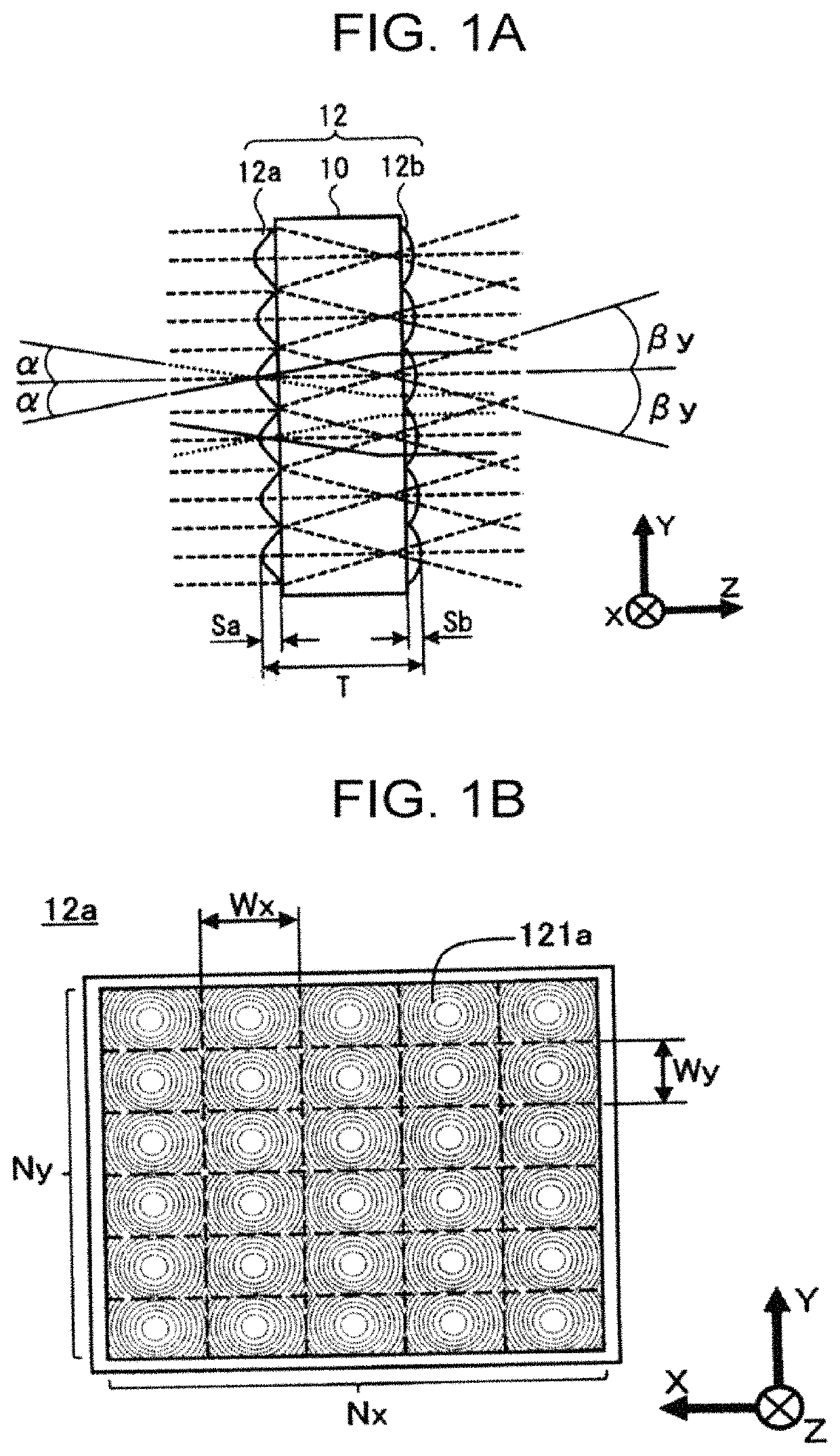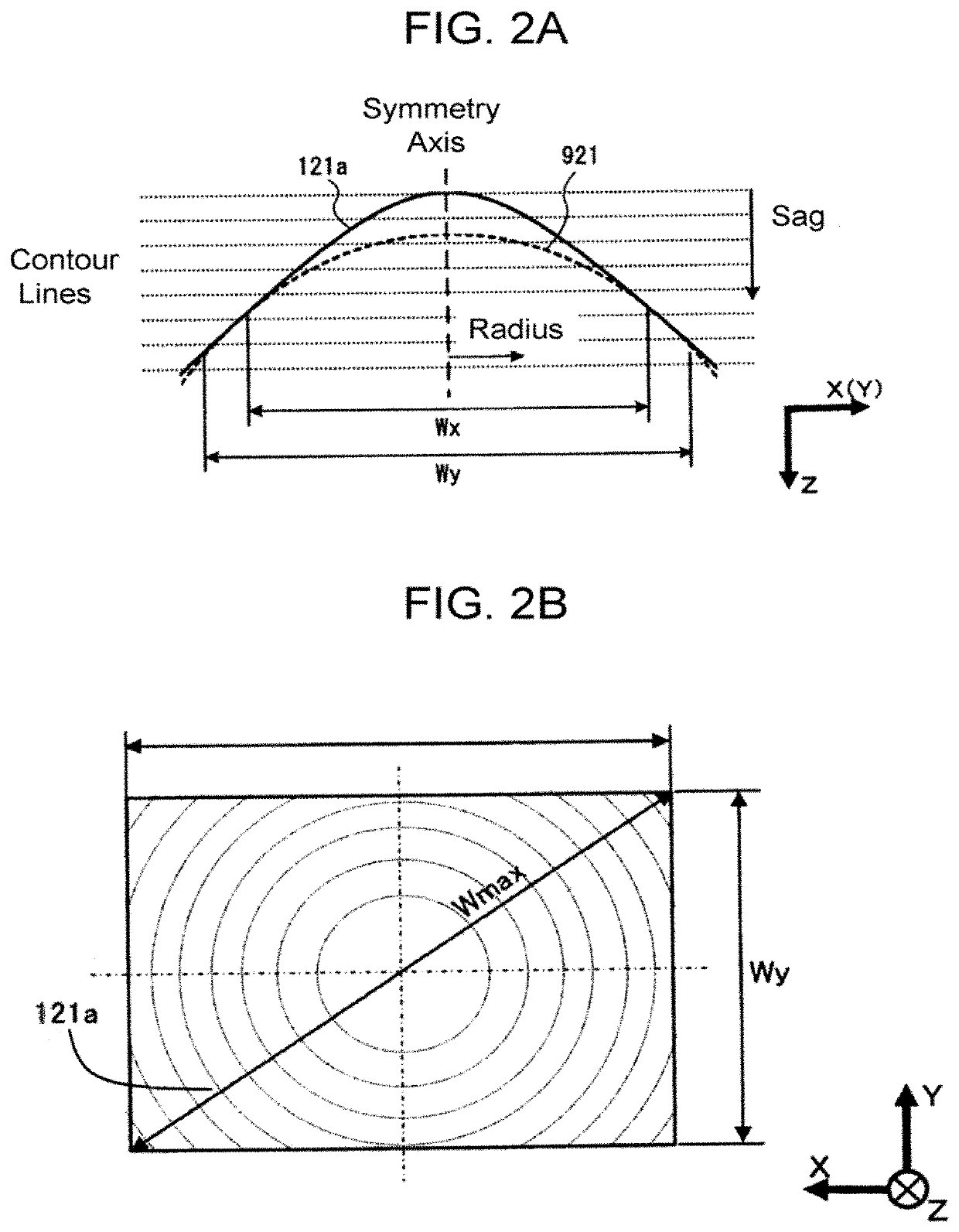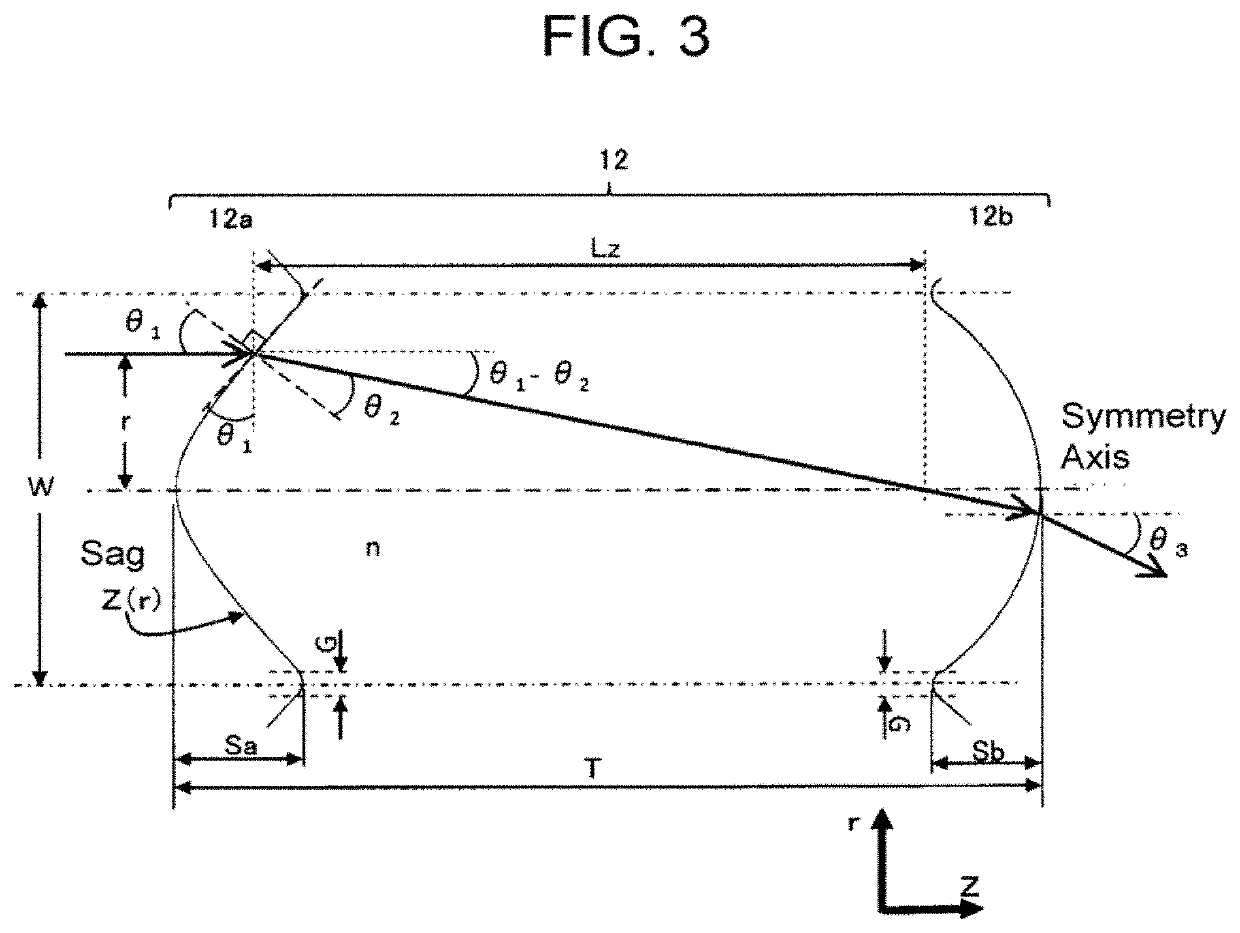Homogenizer, illuminating optical system, and illuminator
a technology of illuminating optical system and homogenizer, which is applied in the direction of instruments, lighting and heating apparatus, lenses, etc., can solve the problems of poor mass productivity, poor distribution of illumination-plane intensity, and difficulty in die forming to produce lens arrays therefrom
- Summary
- Abstract
- Description
- Claims
- Application Information
AI Technical Summary
Benefits of technology
Problems solved by technology
Method used
Image
Examples
embodiment 1
[0090]Examples of embodiments of the present invention are explained below by reference to drawings. FIG. 1A and FIG. 1B are respectively a cross-sectional view and a plan view which show an example of a homogenizer according to a first embodiment. As FIG. 1A shows, the homogenizer 12 according to this embodiment includes a light-transmitting substrate 10 having a flat-plate shape and a first convex-lens array 12a and a second convex-lens array 12b, which are disposed respectively on two surfaces (first surface and second surface) of the light-transmitting substrate 10.
[0091]In the first convex-lens array 12a and the second convex-lens array 12b, convex lenses 121a constituting the first convex-lens array are respectively paired with convex lenses 121b constituting the second convex-lens array. More specifically, the first convex-lens array 12a and the second convex-lens array 12b are each a gap-less lens array in which flat portions between adjoining convex lenses are small, and ea...
embodiment 2
[0125]Next, a second embodiment of the present invention is explained. FIG. 5A and FIG. 5B are respectively a schematic cross-sectional view and a schematic plan view which show an example of convex lenses 221a constituting a first convex-lens array 22a of a homogenizer 22 according to the second embodiment. As FIG. 5A and FIG. 5B show, the homogenizer 22 according to this embodiment differs from the homogenizer 12 according to the first embodiment in the configuration and function of the convex lenses 221a constituting the light-entrance-side first convex-lens array 22a. The configurations and functions of a light-transmitting substrate 20 and convex lenses 221b constituting a light-emission-side second convex-lens array 22b are the same as those of the light-transmitting substrate 10 and the convex lenses 121b constituting the light-emission-side second convex-lens array 12b in the first embodiment.
[0126]The convex lens 221a according to this embodiment has a phase diffraction gra...
third embodiment
[0137]The homogenizers (12 and 22) according to the first and second embodiments are each configured of a first convex-lens array (12a or 22a) and a second convex-lens array (12b or 22b) each obtained by arraying convex lenses which each have a lens surface symmetric with respect to the axis and have an XY-plane outer shape that is quadrilateral (Wx×Wy). Because of this, the convex-lens surface has a maximum diameter and a maximum depth (maximum sag value) along diagonal directions of the quadrilateral shape. In the case where the outer shape is square (W=Wx=Wy), the maximum width (Wmax) of each convex lens is expressed by the formula (7). Spherical lenses have a lens depth being twice as compared with the directions of the sides (X axis and Y axis) of the square.
[Math. 2]
Wmax=√{square root over ((Wx2+Wy2))}=2·W (7)
[0138]Furthermore, in each convex-lens array, quadrilateral convex lenses each having a maximum inclination angle at the corners are arranged such that four convex-lens ...
PUM
 Login to View More
Login to View More Abstract
Description
Claims
Application Information
 Login to View More
Login to View More - R&D
- Intellectual Property
- Life Sciences
- Materials
- Tech Scout
- Unparalleled Data Quality
- Higher Quality Content
- 60% Fewer Hallucinations
Browse by: Latest US Patents, China's latest patents, Technical Efficacy Thesaurus, Application Domain, Technology Topic, Popular Technical Reports.
© 2025 PatSnap. All rights reserved.Legal|Privacy policy|Modern Slavery Act Transparency Statement|Sitemap|About US| Contact US: help@patsnap.com



